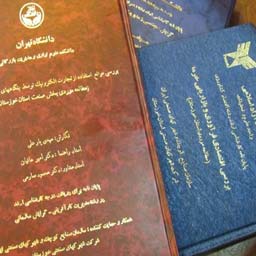
مقطع : دکتری
دانشگاه : ISTANBUL SABAHATTIN ZAIM UNIVERSITY
تاریخ دفاع : 2023/09/23
اساتید راهنما : پروفسور بوشناک متین
اساتید مشاور : پروفسور ابراهیم یلگور
اساتید داور :
مشاهده سایر پایان نامه های نایب قدرت گوجار
In the contemporary era, Omar Khayyam and his Rubaiyyat have garnered the interest of
several intellectuals and scholars as a phenomenon. Khayyamology is based on two
pillars; On the one hand, it highlights a thinker in the Islamic milieu's religious-scientific
and cultural context by citing his scientific, philosophical, and theological treatises. He is
a well-liked, credible monotheist with a straightforward worldview. On the other hand,
Khayyam is demonstrated as a skeptic, nihilist, materialist, and wandering thinker when
attributed quatrains are included, most lacking historical and documentary certainty. The
latter approach, which formed or reinforced several schools of thought, reached its
pinnacle by introducing Khayyam's quatrains into Western literature and via Edward
FitzGerald's free translation and translation manipulations. Due to the contradictory views
on Khayyam, proponents of each viewpoint have endeavored to research every aspect of
history to bolster their claims. Therefore, by relying on reputable scientific and credible
sources, this research also attempts to separate the real Khayyam from the tumultuous
waves of controversial viewpoints and relatively unveil his intellectual and scientific
character. Accordingly, Khayyam is appropriately positioned as a member of Asian,
Islamic, and Persian society. This research also scrutinizes how quatrains related to the
assertions of Eastern Khayyam are interpreted and demonstrated within Islamic
Gnosticism and Sufism contexts.